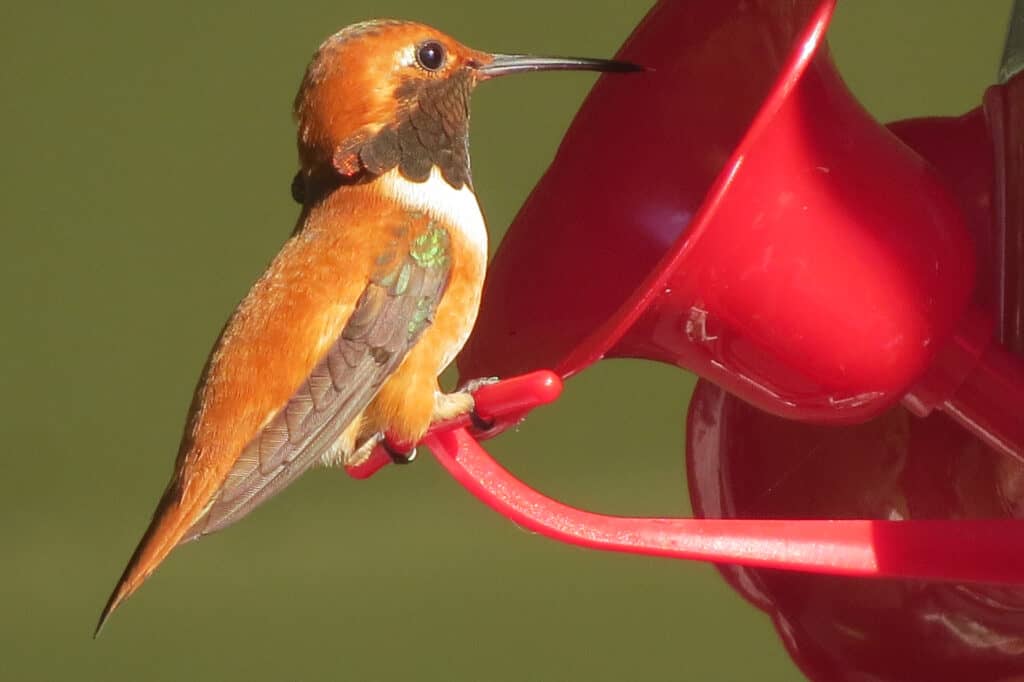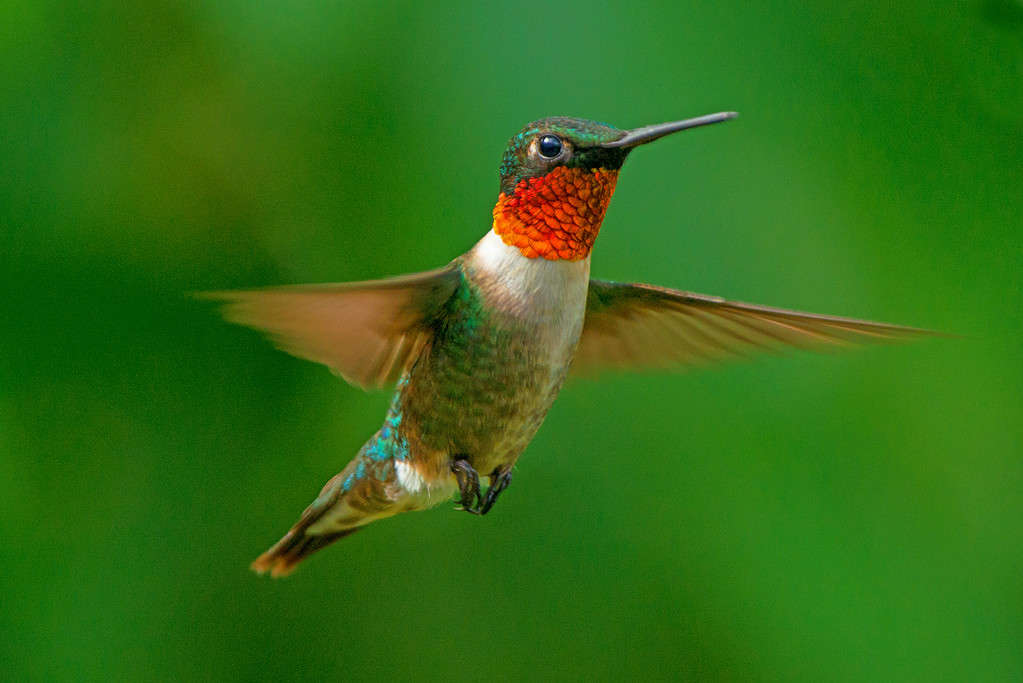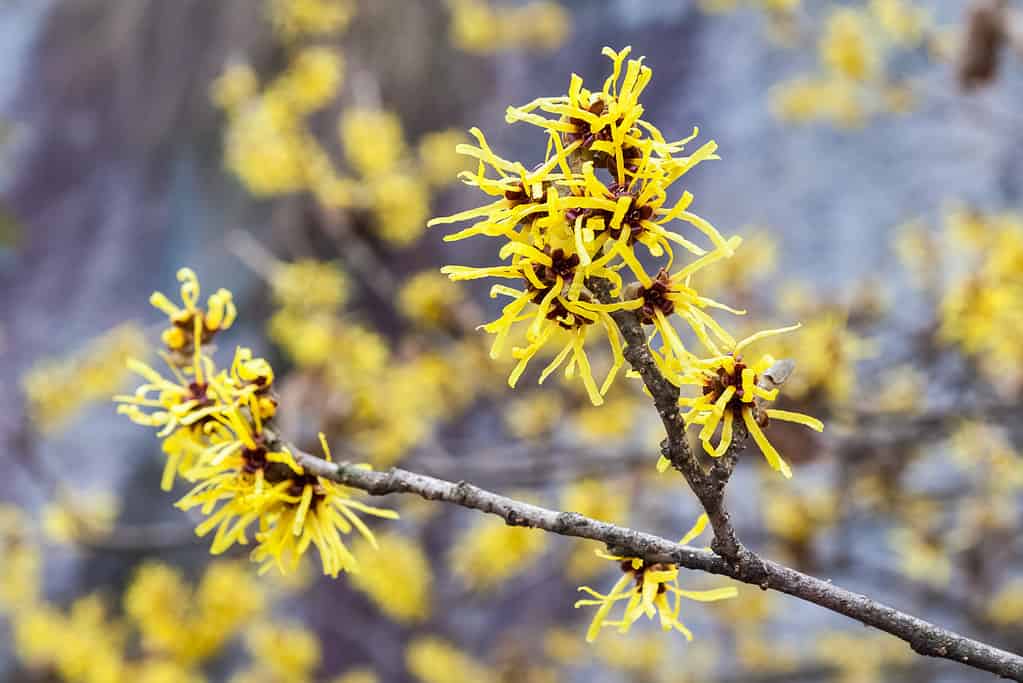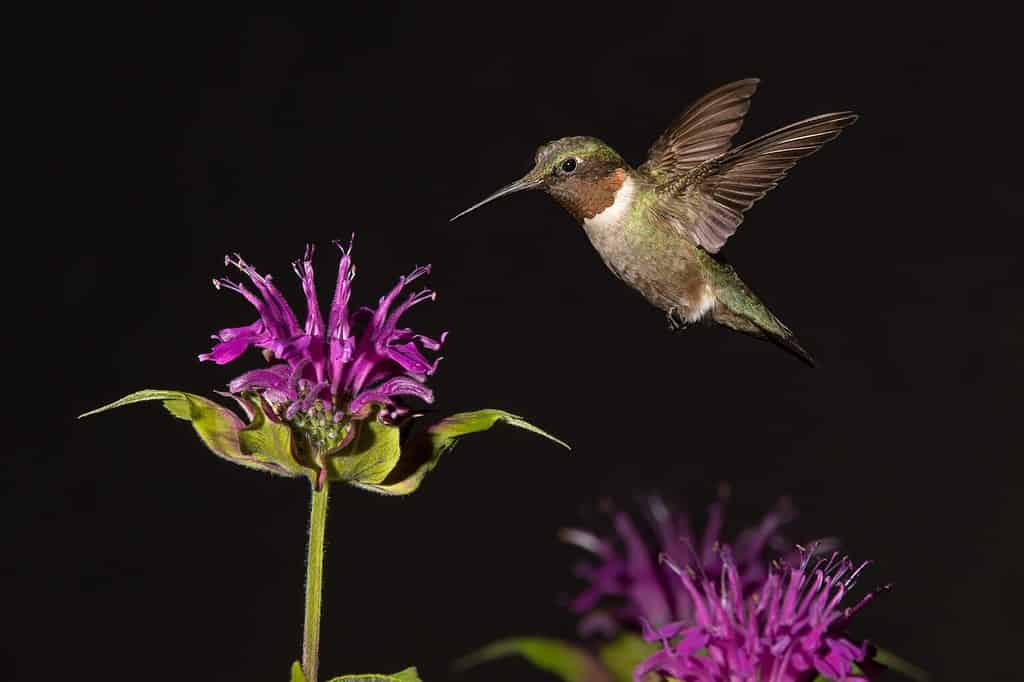If you’re in pursuit of spotting some hummingbirds in January, don’t fret. North America is home to many migratory birds, with most hummingbirds falling into this category. During the winter months, most hummingbirds are in Mexico, where there’s typically more than enough food available from flowers and insects.
However, you shouldn’t give up entirely on looking for these little birds in the winter months! Here are a few places in the U.S. where you might find hummingbirds in January and the species you could encounter.
Texas

Rufous hummingbirds are one of the species you might encounter in January in Texas.
©Rachel Lambert/Shutterstock.com
The warm climate of Texas and its mild winters make it an ideal state for hummingbirds to stop. Some lingering birds might spend their whole winter in the state before traversing the rest of the country during the spring months.
While you might be lucky enough to spot a Rufous hummingbird near the Texas/Mexico border, your chances of seeing a ruby-throated hummingbird are much higher and are not confined to just the border area. This type of hummingbird is the most common in America during the winter. Other less common species include the broad-tailed, Allen’s, and Calliope hummingbirds.
Louisiana

Be sure to leave a hummingbird feeder out through January if you want to attract them to your home.
©rck_953/Shutterstock.com
In late January ruby-throated hummingbirds come to the favorable climate of Louisiana on their return trip from Mexico. Their population slowly builds through January and February and peaks in March. After that, the hummingbirds are back moving towards more north or northeastern states.
Some other “odd” winter hummingbirds you might see in this state are Anna’s hummingbird or black-chinned hummingbirds. Despite the occurrence of seeing these birds in the months of November-February not being completely unusual, it’s still a fairly novel thing to witness. Consider tracking and submitting your sightings to the Baton Rouge chapter of the Audobon Society. This will help them reach a better understanding of the bird’s migratory patterns.
Florida

Ruby-throated hummingbirds best describe the males, as the females do not exhibit the ruby feathers.
©CarolinaBirdman/iStock via Getty Images
Two of the most popularly sighted January hummingbirds can easily be found in Florida: the ruby-throated and Rufous hummingbirds. With year-round warmth throughout the entire state and an abundance of food sources available still, Florida is a great place to spot some “out of season” hummingbirds.
To create a welcoming space for these birds throughout the year, consider keeping a hummingbird feeder out for the winter months. Or, you can plan ahead by having hummingbird-friendly plants throughout your yard.
Arizona

Broad-billed hummingbirds are more active near feeders during the evening hours.
©Monir Hossain/iStock via Getty Images
Arizona is the proud home of 17 species of hummingbirds you can encounter throughout the state and its parks. The border between Arizona and Mexico is the place to be when looking for hummingbirds in January. You’re likely to see any number of the species that hang out in the U.S. when they’re on their yearly trek to Mexico.
All of the aforementioned species are likely to be seen in Arizona, especially as you get closer to Mexico. Other species like the broad-tailed hummingbird and broad-billed hummingbird might also make an appearance near feeders. Due to the year-round presence of hummingbirds, maintaining fresh food for the birds and a clean feeder is important to help support the local populations.
Alabama

Witch hazel is a winter-blooming flower that provides food and shelter for many animal species.
©chuyu/ via Getty Images
The state of Alabama doesn’t boast as much hummingbird diversity as Arizona. Nevertheless, it still has its share of species that spend their winters in the state. Rufous, ruby-throated, and black-chinned hummingbirds are the ones you might have a chance of spotting in January. However, it’s a bit rarer to find these species in Alabama than some of the other states.
Areas of Alabama that stay warm throughout the winter months are naturally more welcoming for hummingbirds. Ensuring there’s a steady supply of sugar water or winter-blooming plants like witch hazel can help supplement their diet. Additionally, anywhere with an abundance of bugs is a great place for hummingbirds!
Mississippi

Ruby-throated hummingbirds stay in Mississippi throughout the year thanks to the favorable climate.
©Matt Cuda/Shutterstock.com
You can almost certainly count on ruby-throated hummingbirds to be present during Mississippi’s mild winter months, January included. However, other species common east of the Mississippi River like Rufous or black-chinned might not be as easy to spot or as common. Don’t let this deter you from keeping your hummingbird feeder stocked. Ruby-throated hummingbirds will still need nectar for energy. Help keep them well-fed heading into the breeding season, which usually starts in March.
The photo featured at the top of this post is © David Kish/iStock via Getty Images
Thank you for reading! Have some feedback for us? Contact the AZ Animals editorial team.






